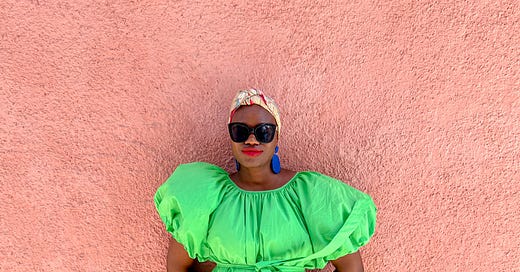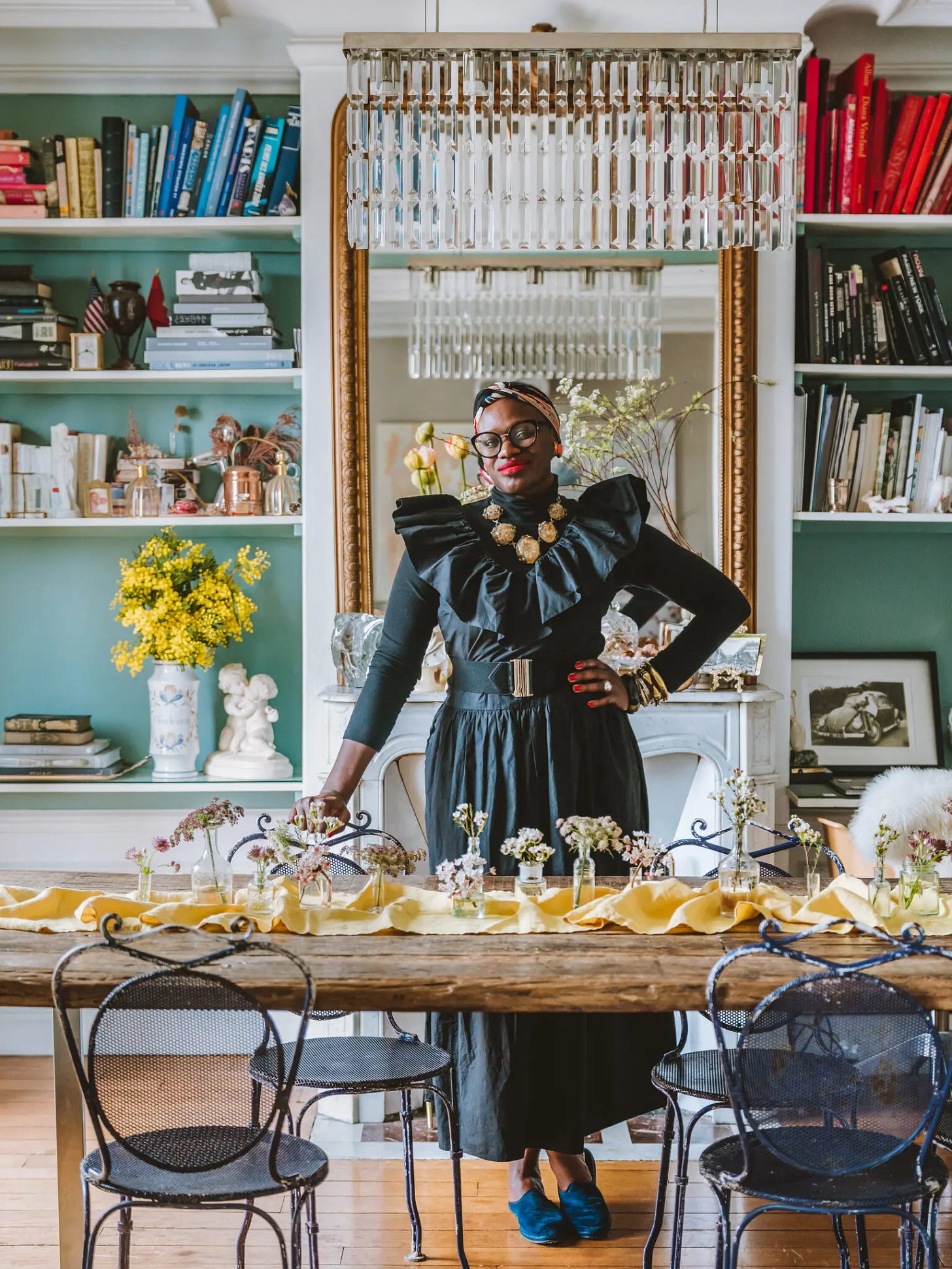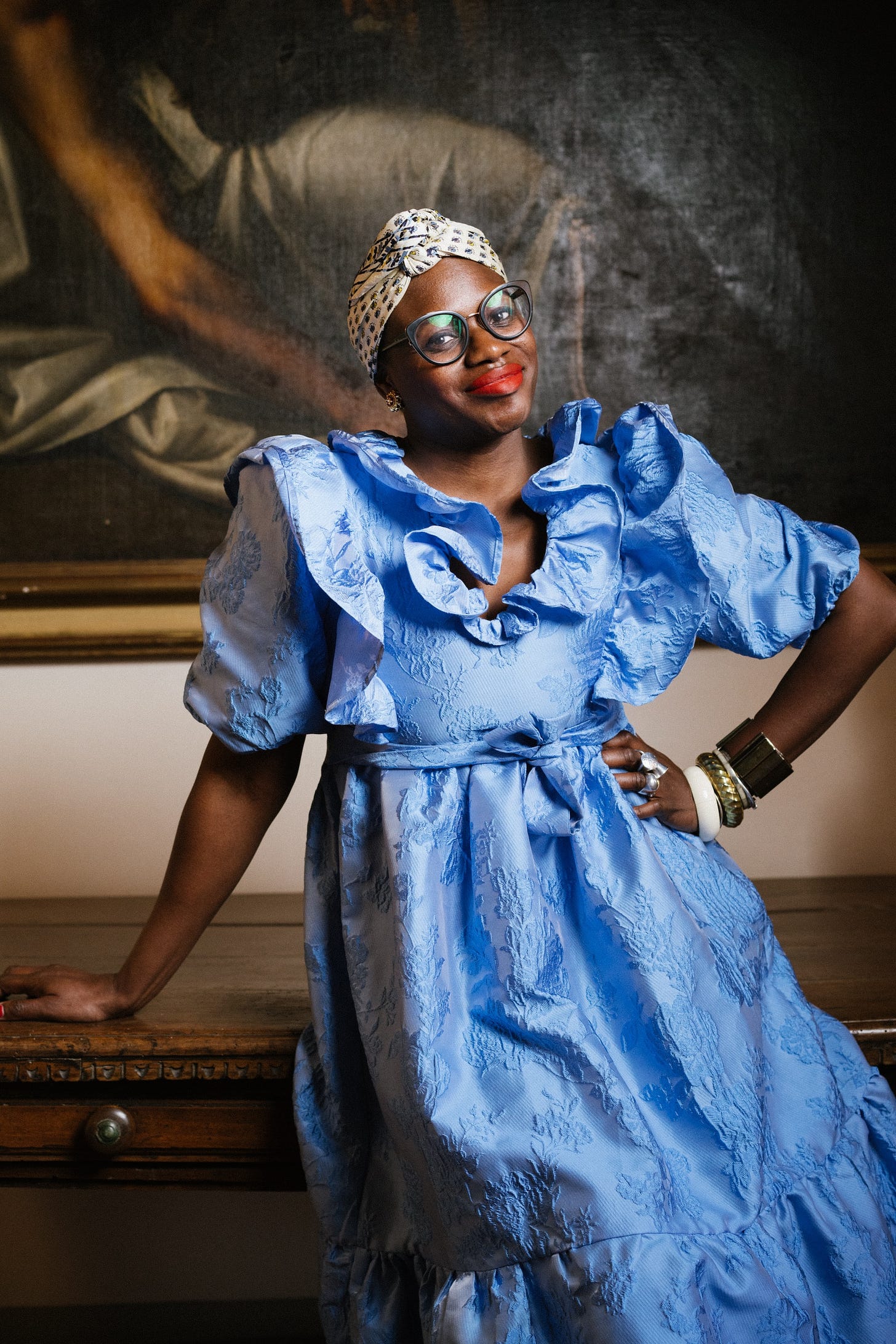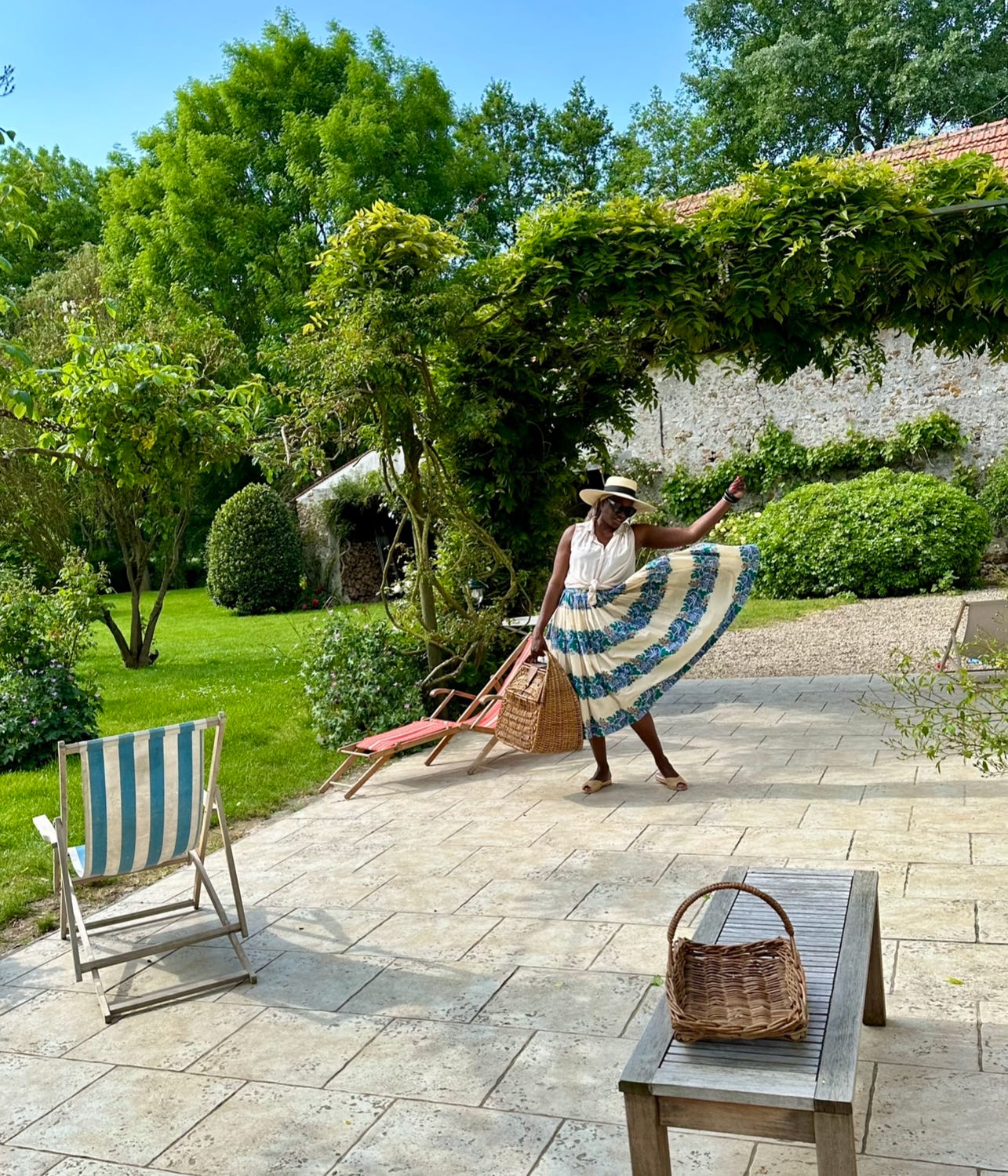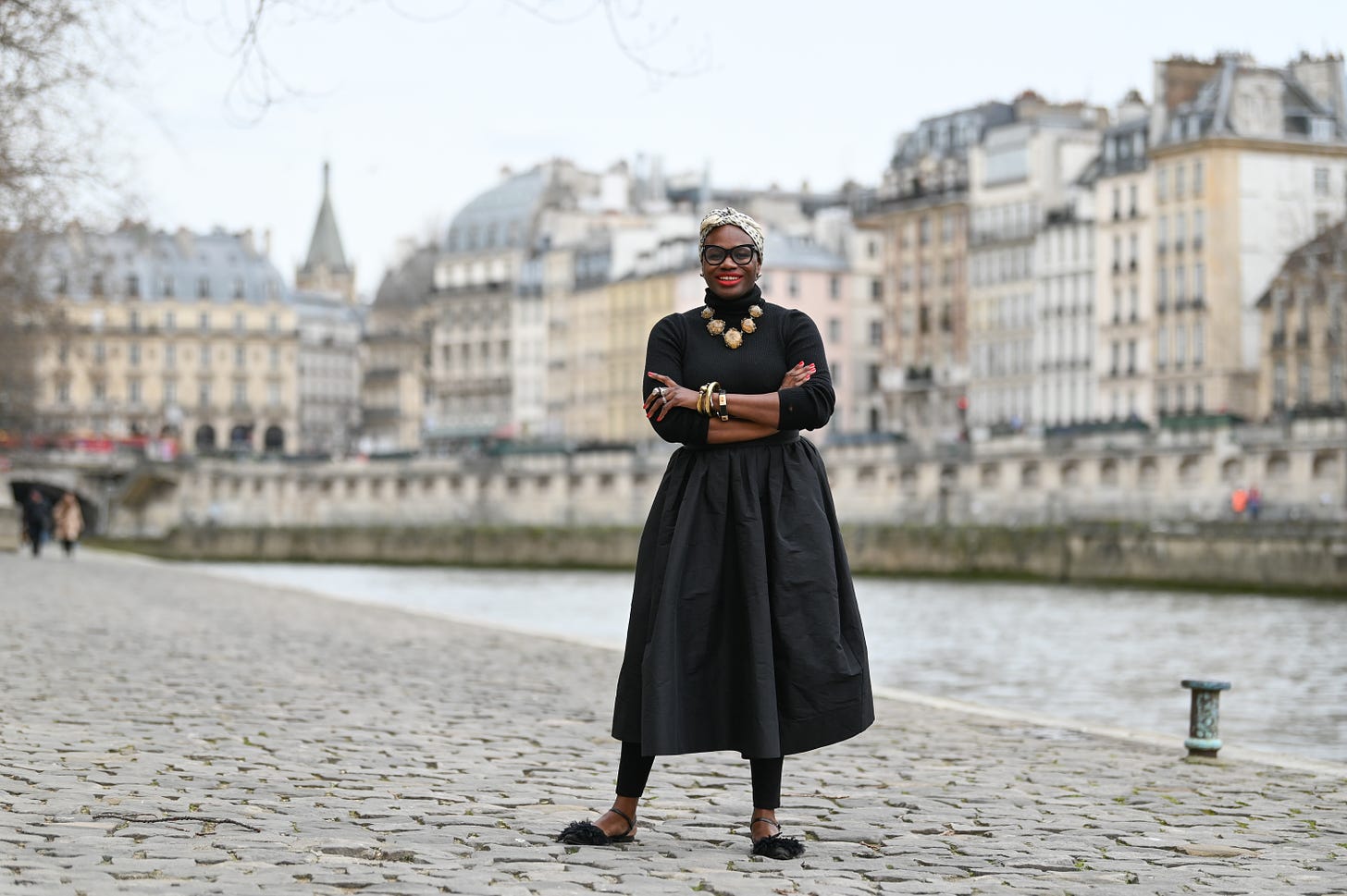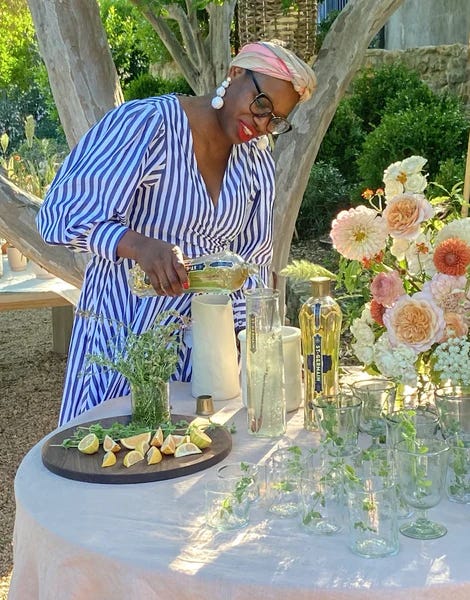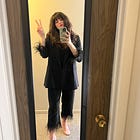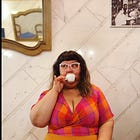Like many of my style story guests, I can’t remember when I first encountered Ajiri and her incredible lifestyle resources (maybe it was years ago on Camille Styles?). I’ve been a Francophile for as long as I can remember, and her style, interiors, events, and Paris guides are so delicious to take in. Of course, I’ve always idealized the style and ethos of French women regarding their clothes (not too much, high quality, repeat often, stay timeless), but over the last couple of years have realized that that approach is often based on a thin ideal. I have one long time client who lives in Paris and has found it almost impossible to find clothes in her size (US 14/16, XL) or to move away from that typical French style. I loved hearing that living in Paris has actually been really conducive to Ajiri’s embrace of her natural self and that her style, while thoroughly French, has also retained her sense of individuality, personal style, and creativity. You’re going to love hearing about her life.
Note: this post is delightfully image heavy, so if you’re reading in your email, make sure to click through to finish the article!
Q: Introduce yourself, your work, and how you spend your time.
My name is
. I was born in Nigeria, raised in Texas, spent my 20s in New York City and now have lived in Paris for 13 years. I am an author and my latest book is Joie: A Parisian’s Guide to Celebrating the Good Life. I am also the founder of the lifestyle brand Madame de la Maison, which focuses on French antiques and linens for gatherings. Recently I launched a newsletter on Substack called Notes on Joie about people, places, and things to spark joy and inspire others. (Editor’s note: Ajiri is too modest. She has a long background working in fashion in NYC and has been featured multiple times on Vogue.com and in the New York Times.)Q: What was your style like when you were a child?
I always wanted to dress a bit different and special as if I was going somewhere fancy. Sometimes I would sneak into my mother’s walk-in closet and just sit in there marveling at all her dresses, skirts and high heels lined up. So many styles and colors. She also had a massive collection of accessories and I dreamed of dressing up in all her clothes and not the boring t-shirts and jeans most kids my age were wearing. Her style had a strong influence on me and as a child I had a bit of flair to the way I dressed. My looks included lots of dresses and skirts with ruffles, prints and bright colors even if I was headed to a play date.
As I got older there was the pull to be like everyone else. This probably coincided with me realizing that I wanted the cute boys at school to pay attention to me. For example there were certain brands that were very popular when I was in middle school and high school but my parents thought they were too expensive and wouldn’t buy me any of it so I had to get creative. Either I worked to buy some of those labels or I found ways to customize some hand me down and then styled it my way.
Q: Growing up, what messages were you given about what you should or shouldn’t wear (and from whom or where do you think those messages came)?
I remember that my mother always told me that one should dress nice because you never know who you might bump into. However, growing up in a very religious household there was the ever pervasive message about not showing too much of your legs and definitely no cleavage. I remember before we left for church camp, you had to hold your arms down to your sides and your shorts had to be longer than your middle finger. Come to think of it, this might have been a rule at high school also. The problem for me is that I am tall and have incredibly long arms, so I always hated the way I looked in shorts and certain skirts. That rule was really frustrating to me at the time, but ironically as a 40-something year old adult, I now don’t like wearing anything short or too revealing.
Q: How has your style evolved since you were younger and what phases have you gone through with your style (i.e. high school grunge phase, early working days business casual phase, etc)?
In middle school and high school my style was all about trying to stand out as much as possible for attention and the gaze of others. I told everyone I wanted to live in New York City and work in fashion. I collected fashion magazines and that would inspire me to dress as different as possible to separate myself from suburban kids.
After college when I moved to New York and was working in the fashion industry as an editor and stylist at magazines, I wanted to follow trends but didn’t really have the money to do that. In the beginning I got creative and decided to iron a red “A” on to various white t-shirts and then rotated different skirts, pants and heels as well as lots of accessories (the A was for Ajiri but all anyone thought of was the Scarlet Letter). I figured if I turned this into my uniform or identifiable look it would make it okay that I couldn’t afford the big labels. Then I started going to sample sales and getting lots of freebies from brands, which I resold to second hand stores for money to keep up with trends. This was my “keeping up with the Joneses” phase. It was mentally and socially exhausting.
Q: How have external pressures to conform to the ideal standard of beauty and the thought of how others view you affected your style?
In America, as a woman of color I always felt pressure to have long flowy hair, a full face of make up, nails done, body plucked and to be dressed to perfection if I wanted people to respect me. I put so much time, energy, and money into this belief. The role models and style icons that I idolized at the time were celebrities and top models. Looking back, I think it’s dangerous for a young person to only see famous people as the markers of beauty because their job is to always be “on stage.” Their clothes are borrowed or given to them for free and they usually have a full team to put their look together. Also, 99.9% of the photos we look at are photoshopped. Yet these women were my style icons and the markers of beauty that I strived to emulate.
Q: How have your sense of style and shopping habits shifted along with changes in your body?
It took time to get to this place where I am 100% sure about what I want to put on my body. I know what looks good on me, and what makes me feel good as well. I don’t even waste time buying silhouettes that make me uncomfortable. For example, I don’t like anything that is too tight or too short. You will never catch me in a crop top or a dress with cutouts. These looks aren’t for me. I also don’t feel like I need a closet jam-packed with too many clothes. That is also exhausting to me, so I am not a big shopper. I really prefer to have a tightly curated closet because I remember when I was young and standing in front of my closet and saying, “I have nothing to wear,” even though there were a zillion items in my closet. There is zero joy in that.
Q: What barriers do you encounter in trying to express your style? Are there any situations or spaces you feel your style prohibits you from accessing or gives you better access to?
Now the answer is absolutely a big “no.” I have zero barriers in expressing my style. But as I shared earlier, my younger self felt frustrated not having money to keep up with what I wanted to wear and how I wanted to express myself.
Q: Do you have any style icons? Who are they?
I have style eras that I love more than style icons. I am emotionally drawn to the style from the 1930s through the 1950s. The silhouettes were feminine and I loved how people dressed with more flair. People got dressed up to travel and wore beautiful nightgowns and house coats to walk around their homes. I love full 1950s A-line dresses and skirts that have movement as much as I love a long flowy 1930s grecian inspired dress.
Q: How would you define your current relationship to clothes and style?
Since moving to France my relationship has changed dramatically. It is more positive and I feel more confident and joy. There is a false but pervasive stereotype that French women are so chic and leaders of fashion. I find that women here are more about having a style that they are comfortable with and that brings confidence. They aren’t chasing trends and so I too stopped chasing them. Since I have made this shift, my relationship to my style has transformed from the pressure I felt when I lived in New York City to feeling more free. Also, most apartments in Paris don’t have a lot of closet space, so that is really helpful in curating my closet.
The French have this saying to be bien dans sa peau, which means to feel good in your skin. And I strive towards this when I think about how I dress and my approach to beauty.
Q: What makes your style authentic to who you are today?
My style is set and I love that. People recognize me and know my looks because I don’t stray far. I am usually wearing a head scarf or hat, a long dress or skirt, lots of jewelry, red fingernails and lipstick. This is my style.
Q: Do you wear anything that’s conventionally considered unflattering?
I am not sure I would care if anyone felt this way about what I wear. It’s truly a great feeling to finally feel confident and comfortable being exactly who I am. And sometimes I repeat my looks a few days in a row, which is very unconventional in American, and I love that it’s pretty normal here in France.
Thank you so much, Ajiri! I resonate so much with that period of life of dressing for others and to be seen as attractive, the exhaustion of trying to keep up with trends and with celebrity culture’s standards of beauty. And of course, reading all of this just rekindles my dream of living in Paris someday! Make sure you subscribe to Notes on Joie and check our Ajiri’s book, Joie: A Parisian’s Guide to Celebrating the Good Life.
Previous style stories:
Paid subscribers, read on to hear three of Ajiri’s wardrobe recommendations.
Q: Just for fun, what are 3 things in your wardrobe you’d recommend to others (could be a specific item from a specific brand or just a type of item you find useful)?


